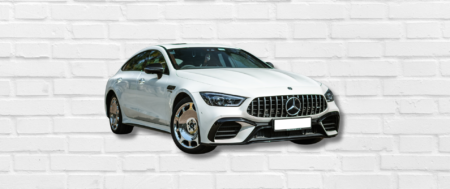Key Points to Check Before Buying a Used Car
Buying a used car can be a smart financial decision, but it requires careful attention to detail to ensure you’re making a good purchase. Here’s a checklist of essential points to consider before buying a used car to help you avoid common pitfalls and drive away with confidence.
1. Exterior Condition
- Body Panels and Paint: Inspect the car’s body for scratches, dents, rust, or signs of a repaint, which may indicate past accidents.
- Gaps and Alignment: Check the alignment of doors, hood, and trunk. Uneven gaps can suggest previous bodywork or frame damage.
- Lights and Lenses: Ensure all lights—headlights, taillights, and indicators—work correctly and that lenses are not cracked or fogged.
2. Interior Condition
- Seats and Upholstery: Look for tears, stains, or excessive wear on seats, upholstery, and carpets.
- Dashboard and Controls: Test all controls, buttons, and switches on the dashboard, including the air conditioning, heating, and infotainment systems.
- Odors: Check for musty or strange odors, which could indicate mold, water damage, or previous smoking.
3. Under the Hood
- Engine Condition: Inspect the engine for signs of leaks, corrosion, or worn belts and hoses. Look for fluid leaks under the vehicle.
- Fluids: Check the levels and conditions of the oil, coolant, brake fluid, and transmission fluid. Fluids should be clean and at the correct levels.
- Battery: Inspect the battery for corrosion around terminals and check the age if it’s visible on the label.
4. Tires and Wheels
- Tire Condition: Examine the tread depth and check for even wear. Uneven tire wear can indicate alignment or suspension issues.
- Spare Tire and Tools: Ensure the spare tire, jack, and tools are present and in usable condition.
- Wheels: Check for any cracks, bends, or other damage on the wheels or rims.
5. Brakes
- Brake Performance: During a test drive, pay attention to how the brakes feel. There should be no squealing, grinding, or vibrations when braking.
- Brake Pads and Rotors: Visually inspect the brake pads for thickness and check the rotors for excessive wear or warping.
6. Undercarriage
- Rust and Damage: Inspect the undercarriage for rust, damage, or signs of fluid leaks. Rust on critical areas like the frame or suspension components can be a red flag.
- Exhaust System: Check for rust, holes, or damage in the exhaust system, which could lead to costly repairs.
7. Test Drive
- Steering and Handling: Ensure the steering is responsive and the car handles well without pulling to one side.
- Acceleration and Shifting: Test the acceleration, listen for any unusual engine noises, and make sure the transmission shifts smoothly.
- Suspension: Drive over bumps and listen for clunks or noises that might indicate worn suspension components.
8. Vehicle History Report
- Accident History: Use services like Carfax or AutoCheck to check if the car has been in any accidents.
- Title Status: Verify that the title is clean (not salvaged or rebuilt).
- Odometer Accuracy: Ensure the mileage on the vehicle matches what is reported in the history report.
9. Mechanical Inspection
- Professional Inspection: Hire a trusted mechanic to inspect the car before purchase. A professional can identify hidden issues that you might miss.
10. Recalls and Service Records
- Outstanding Recalls: Check for any unresolved recalls using the vehicle’s VIN on the NHTSA website and ensure they have been addressed.
- Maintenance Records: Ask for service records to see how well the car has been maintained. Regular oil changes and maintenance can indicate a well-cared-for vehicle.
11. Check the VIN
- VIN Consistency: Ensure the VIN on the dashboard matches the one on the title, door jamb, and any other documentation. Any discrepancies could indicate potential fraud.
12. Ownership and Title Documents
- Title Status: Ensure the title is clear with no liens, and matches the seller’s name.
- Bill of Sale: Have a proper bill of sale that documents the transaction, including the purchase price and terms of sale.
13. Electrical Systems
- Windows, Mirrors, and Locks: Test all electrical features such as power windows, locks, and mirrors to ensure they are functioning correctly.
- Dashboard Lights: Pay attention to any warning lights on the dashboard, such as the check engine light.
14. Air Conditioning and Heating
- Functionality: Test both the heating and air conditioning systems to ensure they work effectively and reach the desired temperatures.
Conclusion
Taking the time to thoroughly check these key areas before buying a used car can save you from unexpected repairs and headaches down the road. A careful inspection, test drive, and professional assessment will help ensure that you’re making a wise investment in a reliable vehicle. Remember, it’s always better to walk away from a questionable deal than to rush into a purchase you may regret later.





